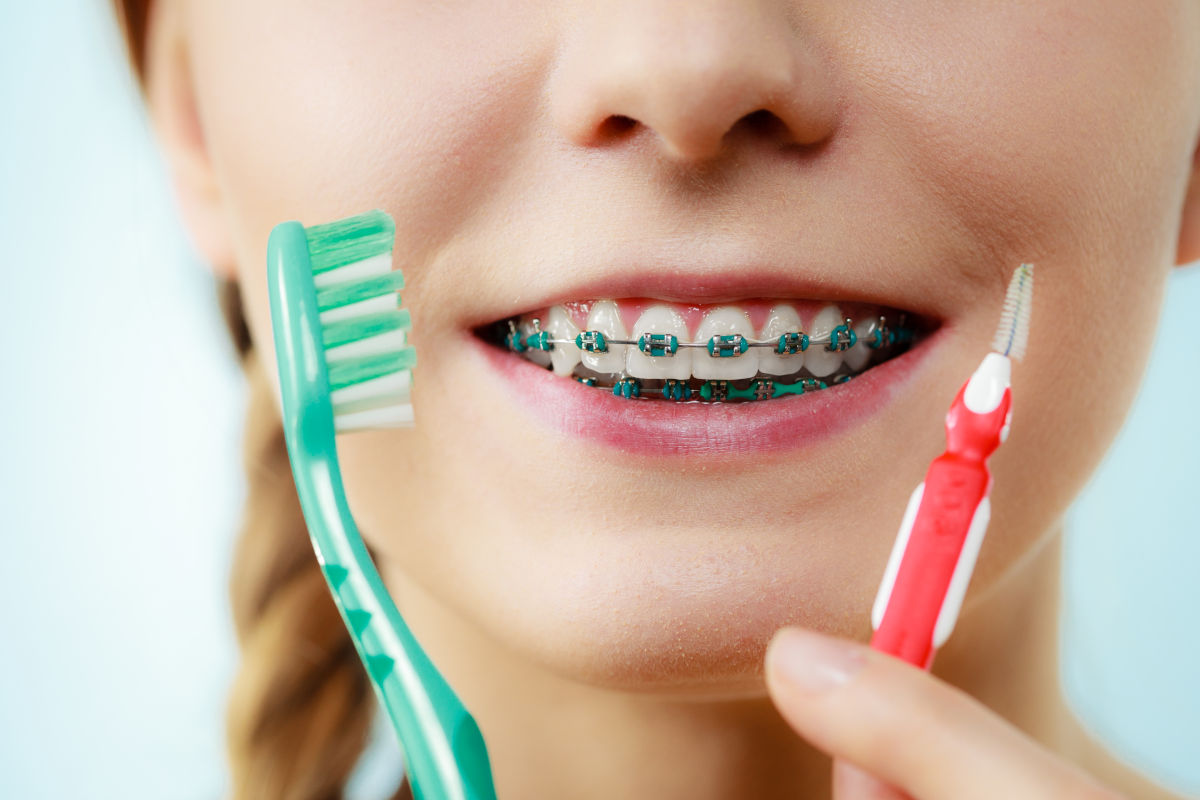Contents

How to Properly Brush Your Teeth with Braces: A Step-by-Step Guide
Wearing braces means adapting your oral hygiene routine. The brackets and wires create countless new places for food and plaque to hide, making thorough cleaning more challenging but also more critical. Impeccable oral hygiene is essential during orthodontic treatment to prevent cavities, gum disease, and staining. This guide explains how to properly brush your teeth with braces and presents the best tools to optimize your dental care.
The Essential Brushing Technique for Braces
Brushing with braces requires a more detailed approach than regular brushing. You need to be extra thorough and gentle to clean effectively without damaging your appliance.
- Rinse First: Vigorously swish with water to dislodge any large food particles.
- Brush Above the Brackets: Angle your toothbrush at 45 degrees down towards the brackets and brush the tops of each bracket and the tooth surface above them.
- Brush Below the Brackets: Angle your brush at 45 degrees up towards the brackets to clean the bottom of each bracket and the tooth surface below.
- Brush the Brackets Directly: Gently brush the front of the brackets themselves with small circular motions.
- Clean All Surfaces: Don't forget the chewing and inside surfaces of your teeth. The total brushing time should be at least two minutes.
Mastering the Interdental Brush
This small, cone-shaped brush is an indispensable tool. It complements your toothbrush by reaching areas that are otherwise inaccessible, especially the spaces between brackets and underneath the archwire.
Flossing with Braces: A Crucial Step
While challenging, daily flossing is non-negotiable. A floss threader is a simple plastic tool that helps guide the floss under your archwire, allowing you to clean between each tooth. A water flosser is also a highly effective tool for blasting away plaque and food debris from around brackets.
How Often Should You Brush Your Teeth with Braces?
While brushing twice a day is the minimum, orthodontists strongly recommend brushing your teeth after every meal and snack when you have braces. Food gets trapped very easily, and the longer it sits, the higher your risk for plaque buildup and cavities. A thorough cleaning session before bed is especially important.
Choosing the Right Tools for the Job
The key is to use a soft-bristled toothbrush to avoid damaging your gums or appliance. Both manual and electric toothbrushes can be effective.
- Orthodontic Toothbrushes: These manual brushes often have a "V-shaped" bristle design that is specifically made to clean around brackets and wires effectively.
- Electric Toothbrushes: Many electric toothbrushes are excellent for people with braces. Their oscillating or vibrating heads can be very effective at removing plaque from hard-to-reach areas. Look for models with a sensitive mode.
Complete Dental Hygiene Kits for Braces
For convenience, consider purchasing an orthodontic hygiene kit. These kits bundle all the essential tools you'll need for optimal oral care, including:
- An orthodontic toothbrush.
- Interdental brushes of various sizes.
- A travel-sized toothbrush for cleaning on the go.
- Floss threaders.
- Orthodontic wax for irritation.
Key Takeaways for Impeccable Oral Hygiene with Braces
| To Do | To Avoid |
|---|---|
| Brush for at least 2 minutes after each meal. | Brushing too aggressively, which can damage gums and brackets. |
| Use a soft-bristled brush and fluoride toothpaste. | Using whitening toothpastes, which can cause uneven coloring. |
| Floss and use interdental brushes daily. | Skipping cleaning sessions, allowing plaque to harden. |
FAQ: Your Top Questions About Brushing with Braces
Absolutely. Electric toothbrushes are often recommended for patients with braces as they can be more effective at removing plaque around brackets. Just be sure to use a soft-bristled head and a gentle setting to avoid causing any damage.
Poor hygiene with braces can lead to several problems, including swollen and bleeding gums (gingivitis), permanent white spots or scars on the teeth (decalcification), and cavities. In severe cases, poor oral health can even delay your orthodontic treatment.
Bad breath with braces is usually caused by trapped food particles and plaque. The best way to combat it is with a rigorous cleaning routine: brush thoroughly after every meal, use an interdental brush and floss daily, brush your tongue, and stay well-hydrated to promote saliva flow.
Yes, it is essential. Your orthodontist focuses on moving your teeth, while your general dentist is responsible for your overall oral health, including professional cleanings and checking for cavities. You should continue to see your dentist for regular check-ups and cleanings every six months.
